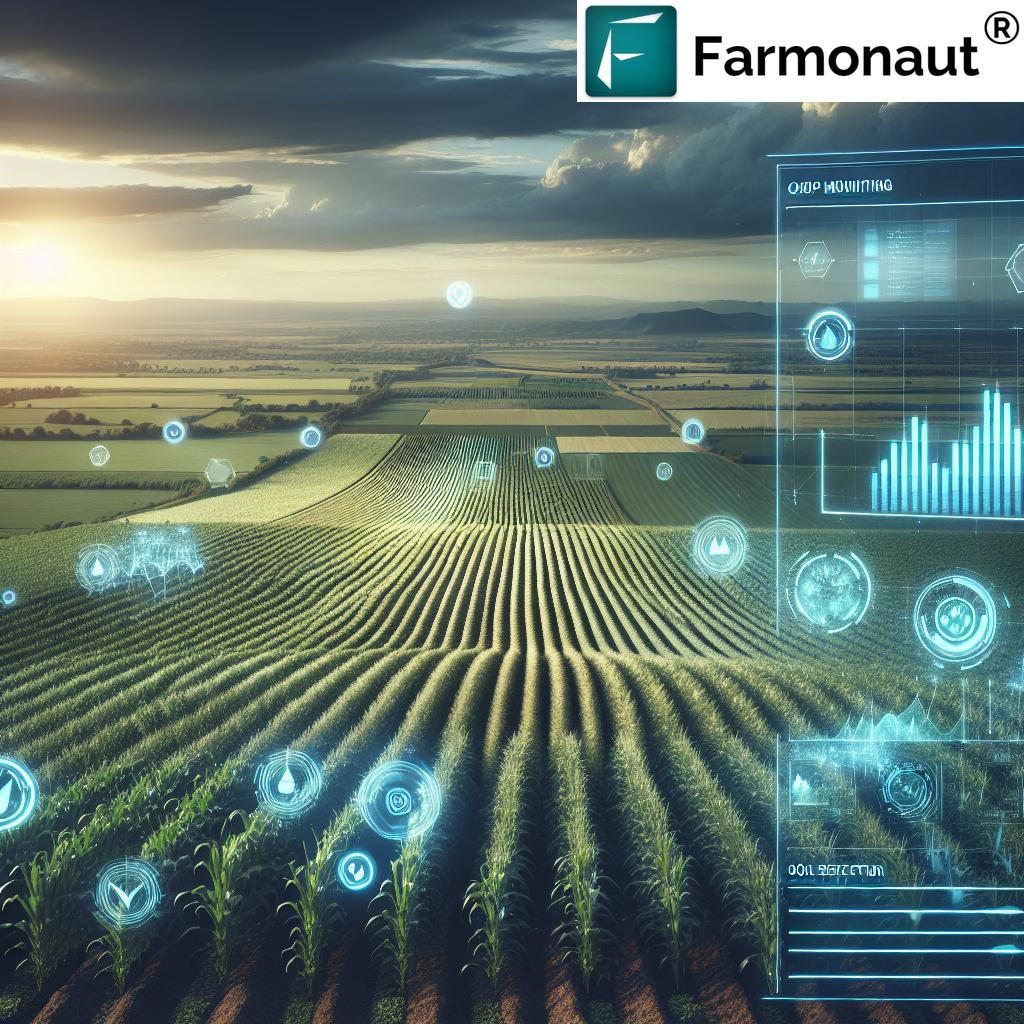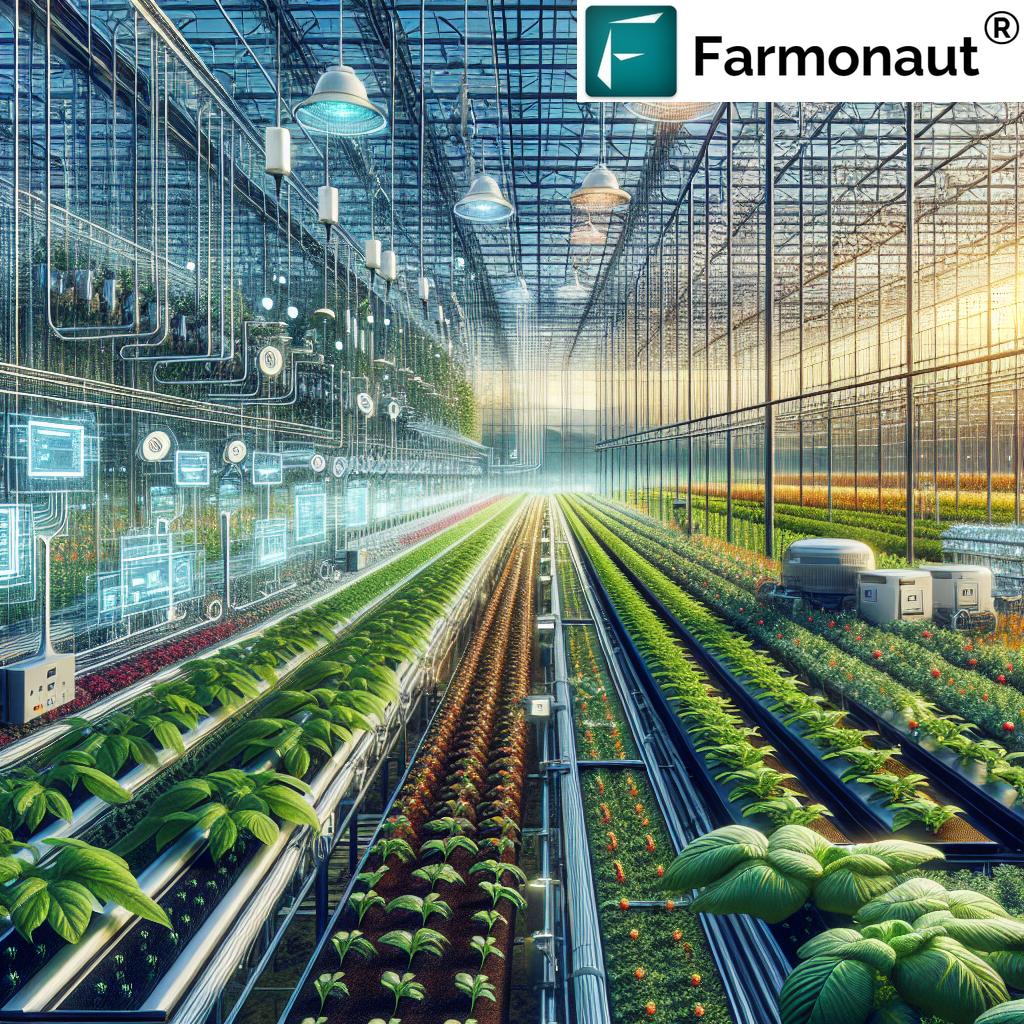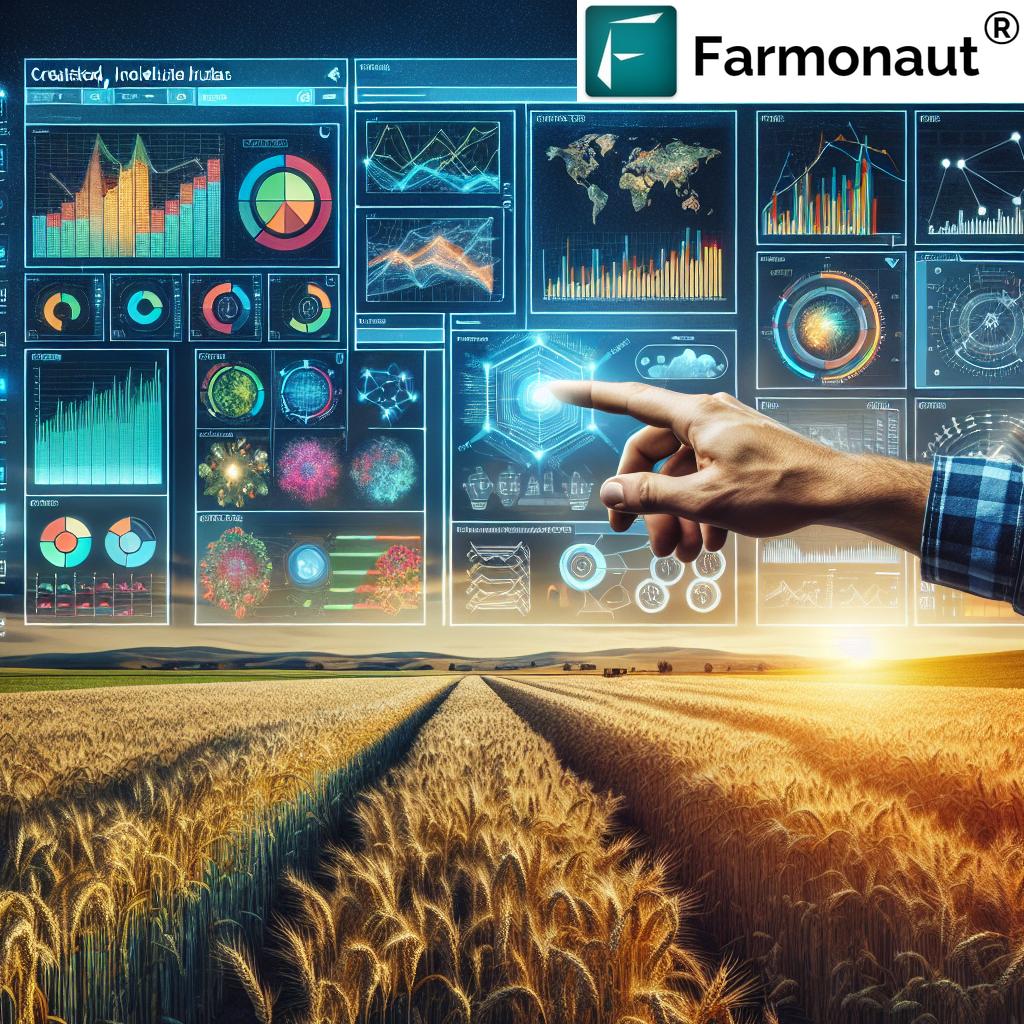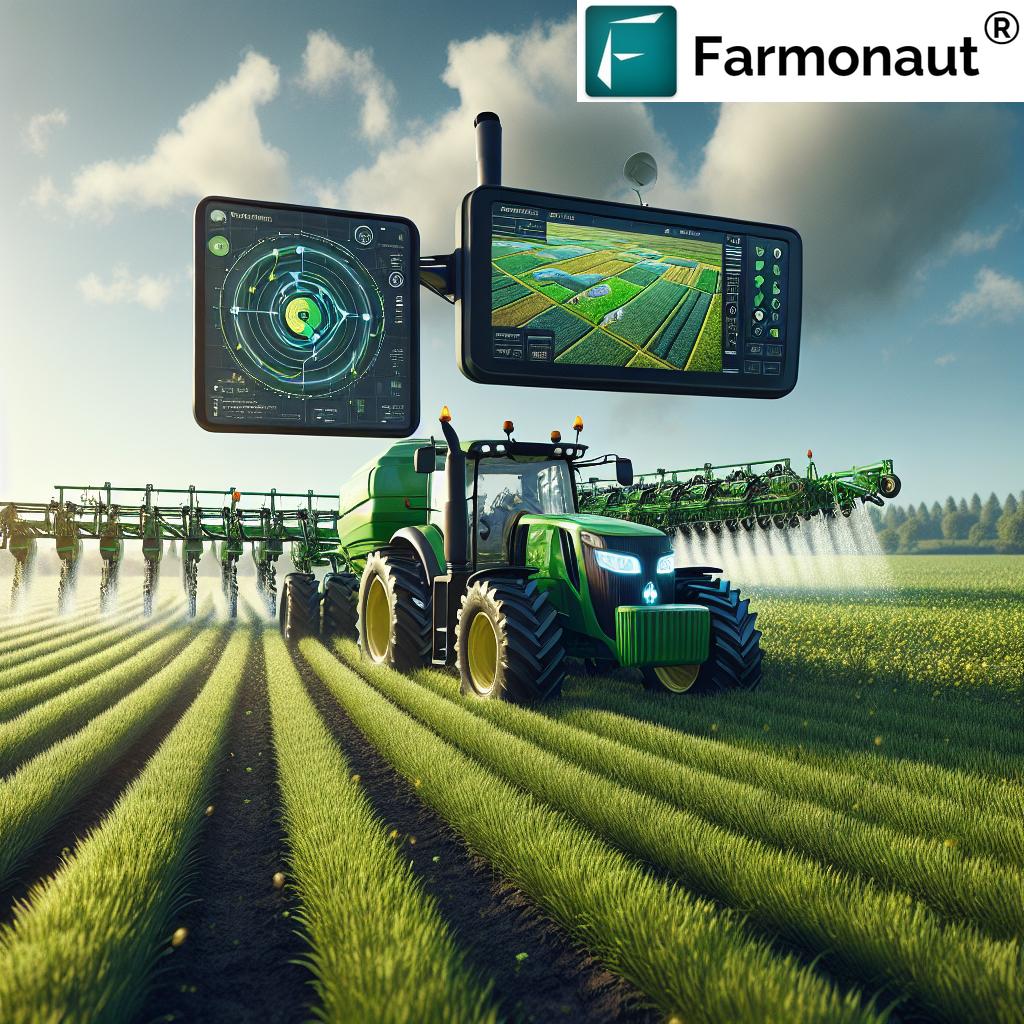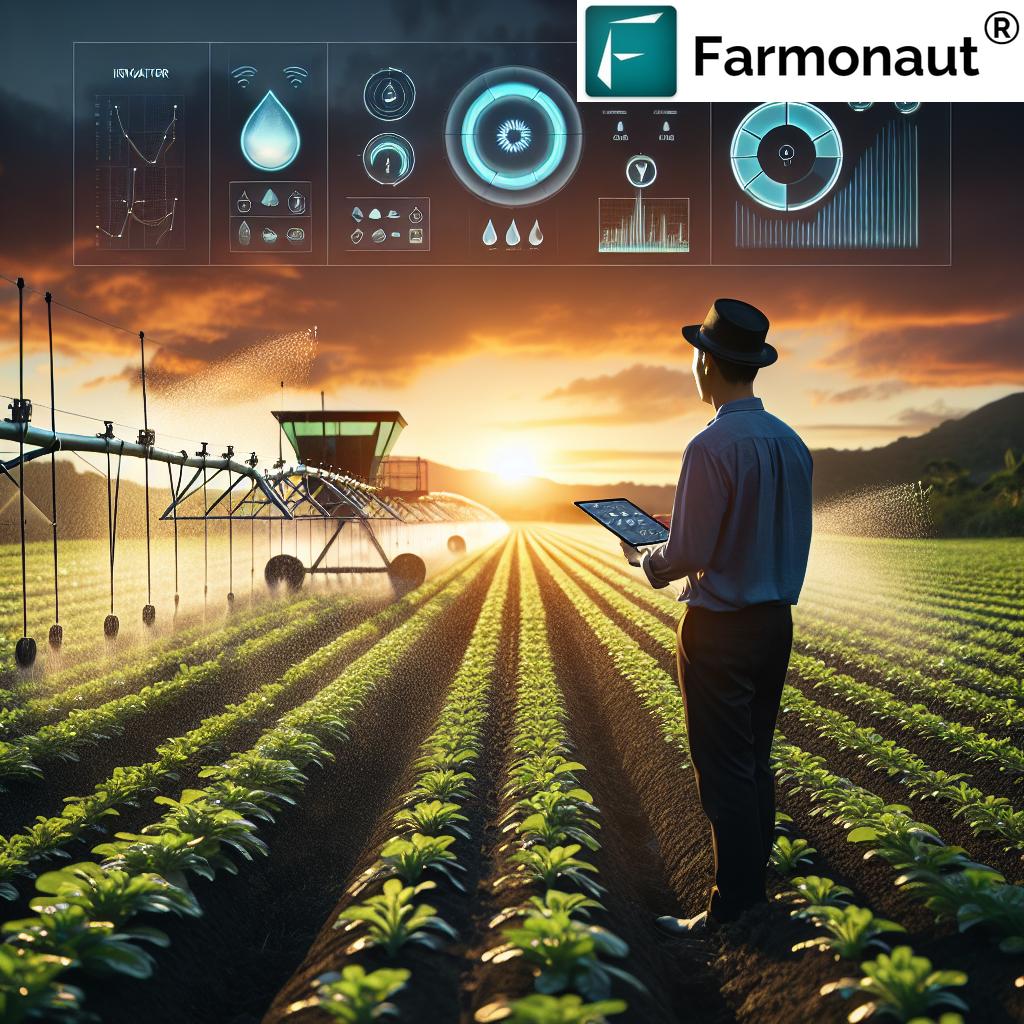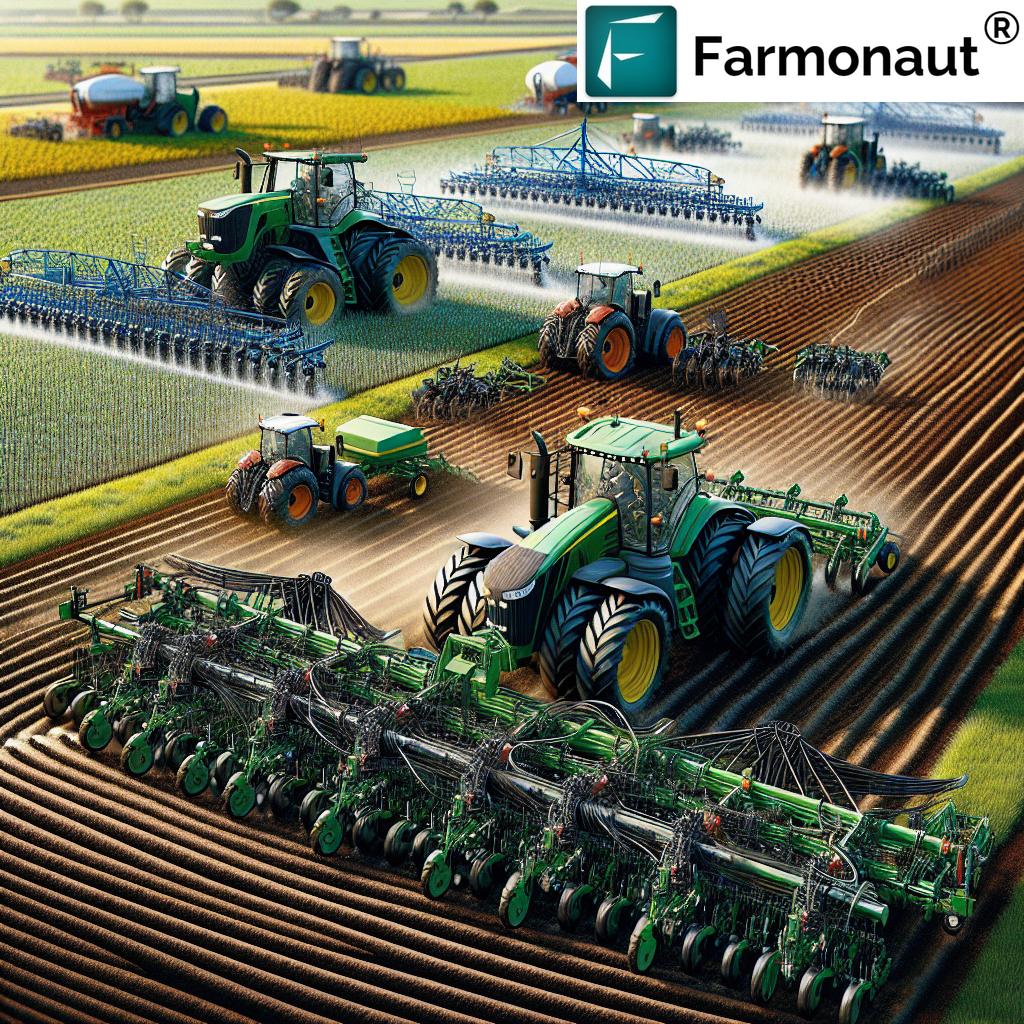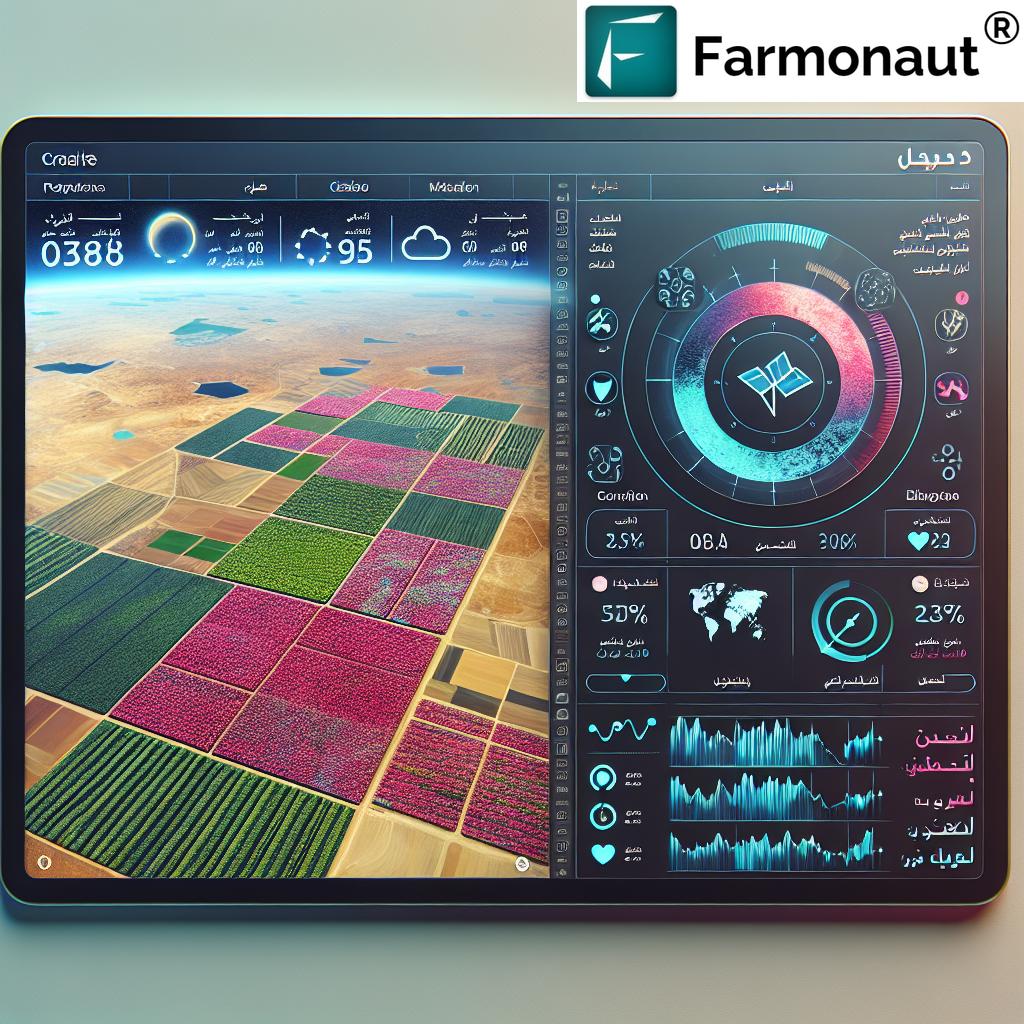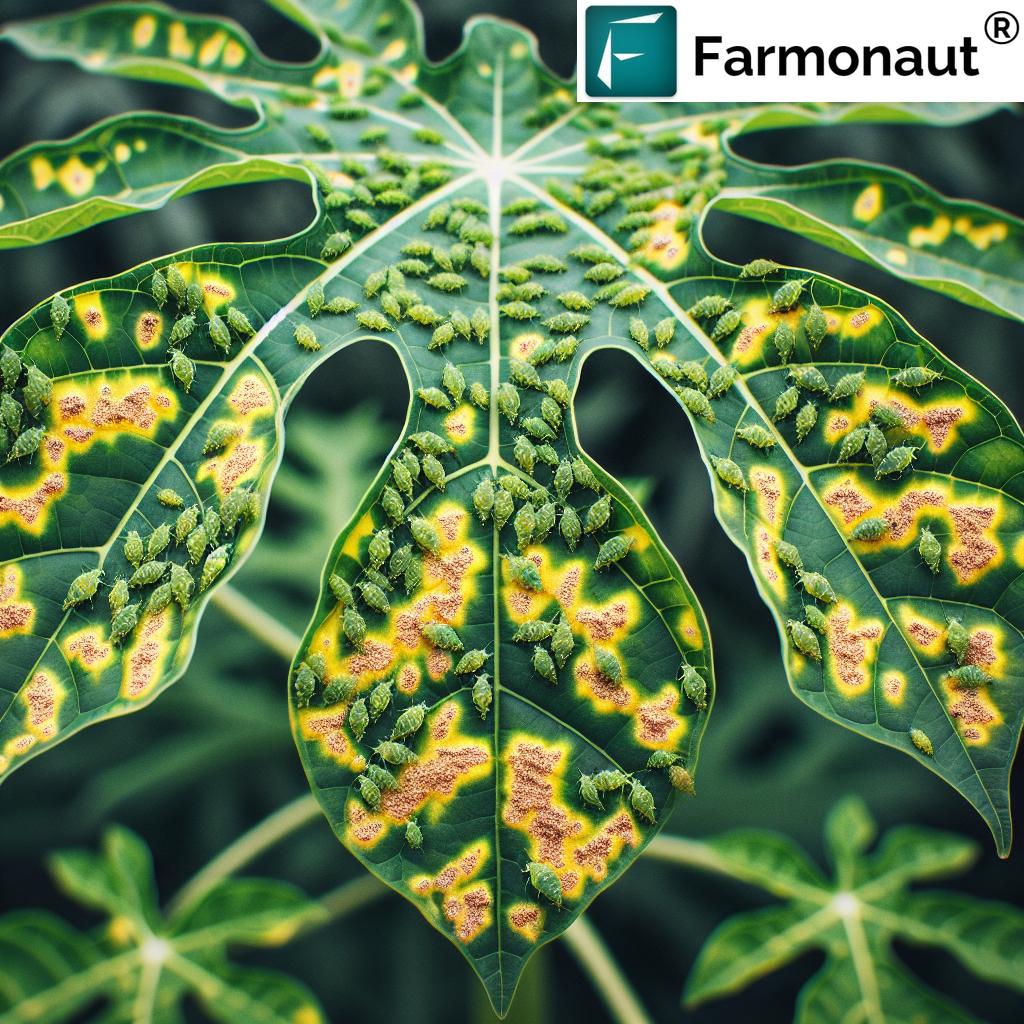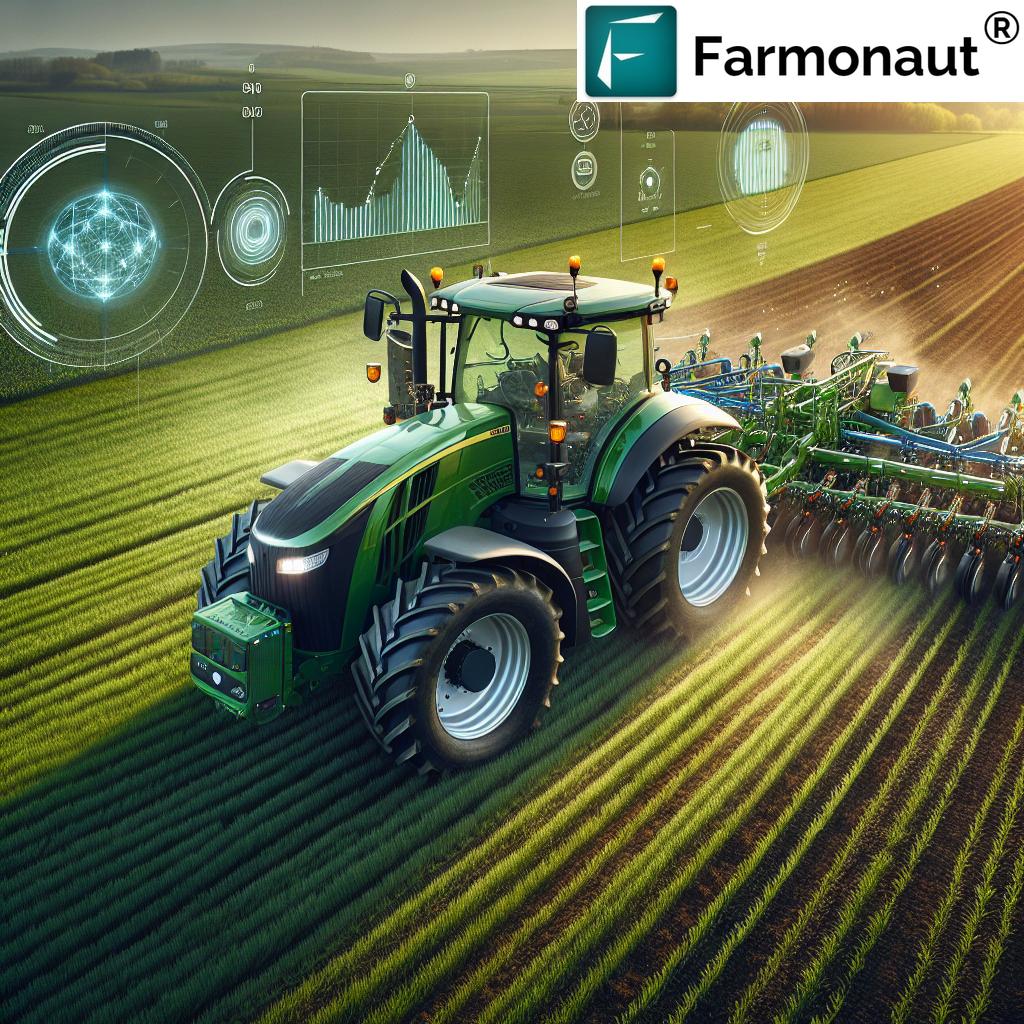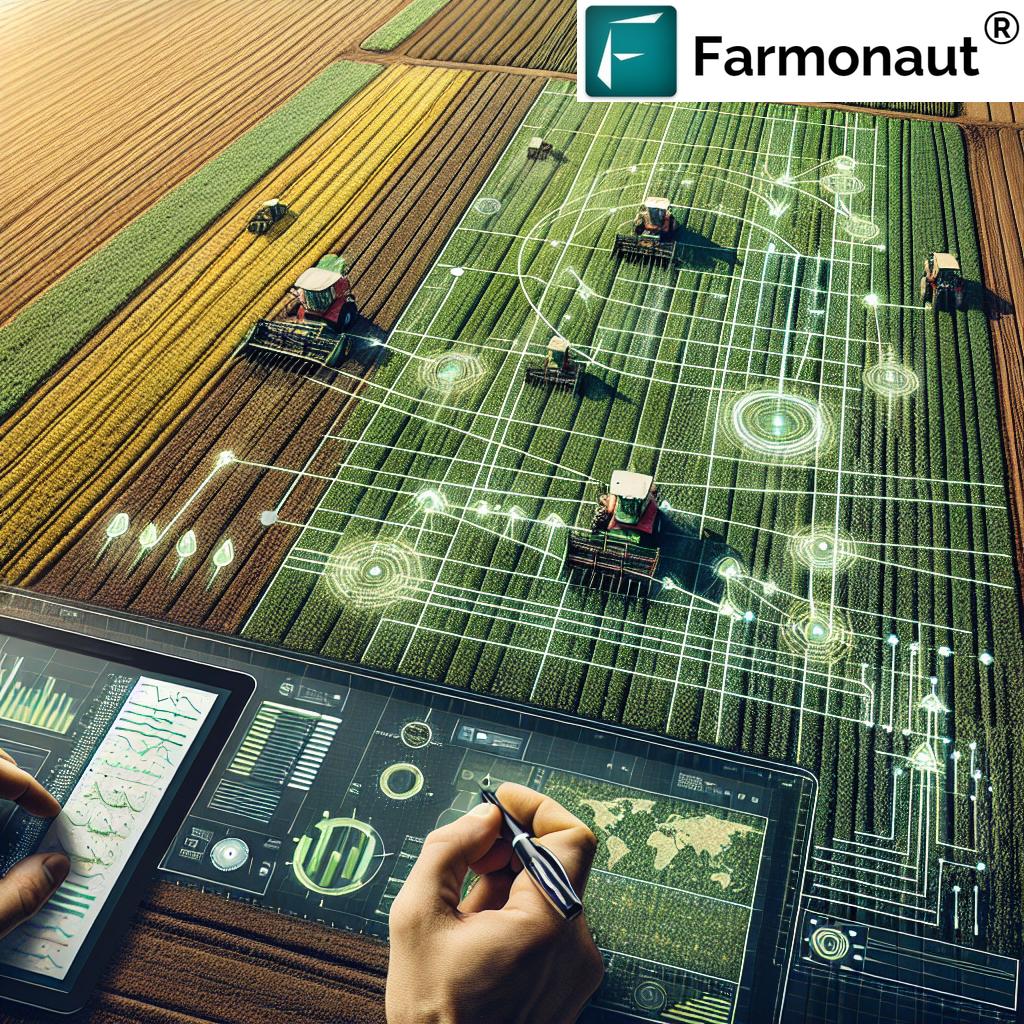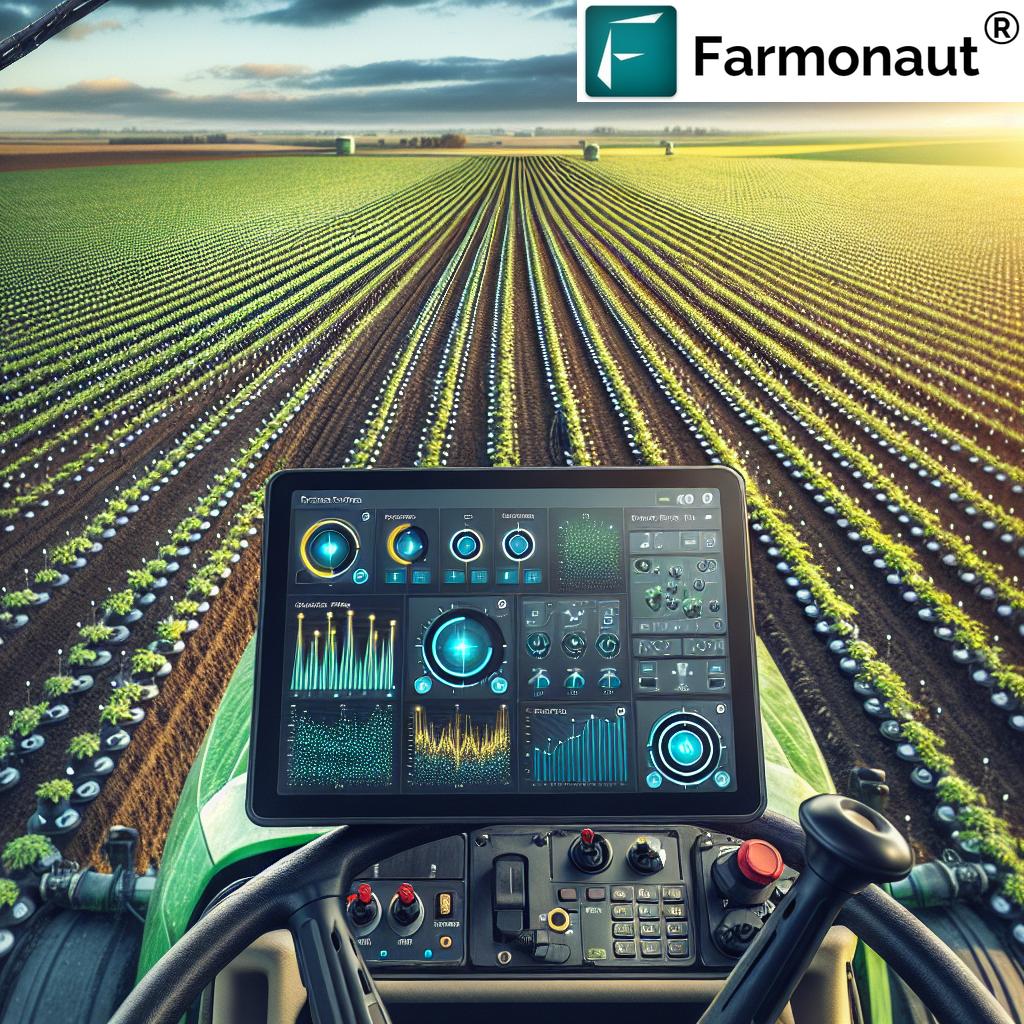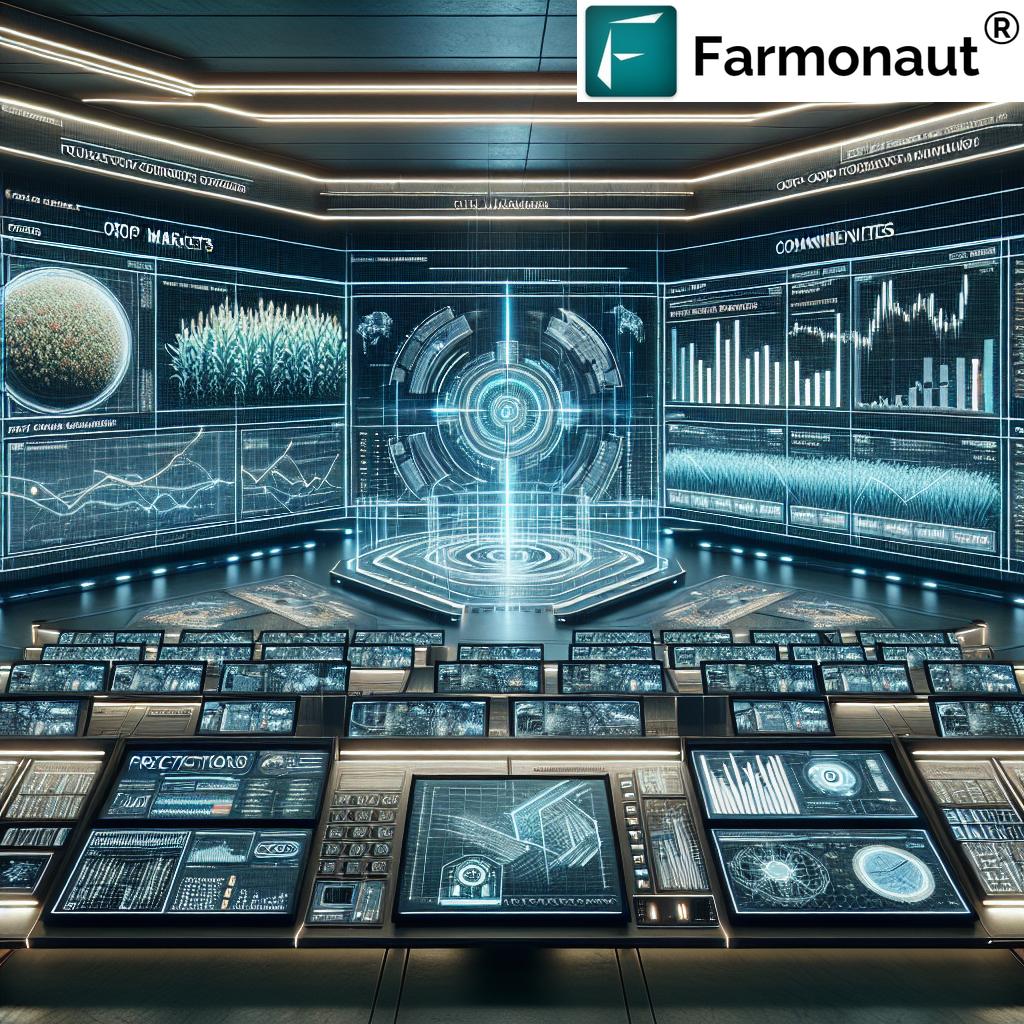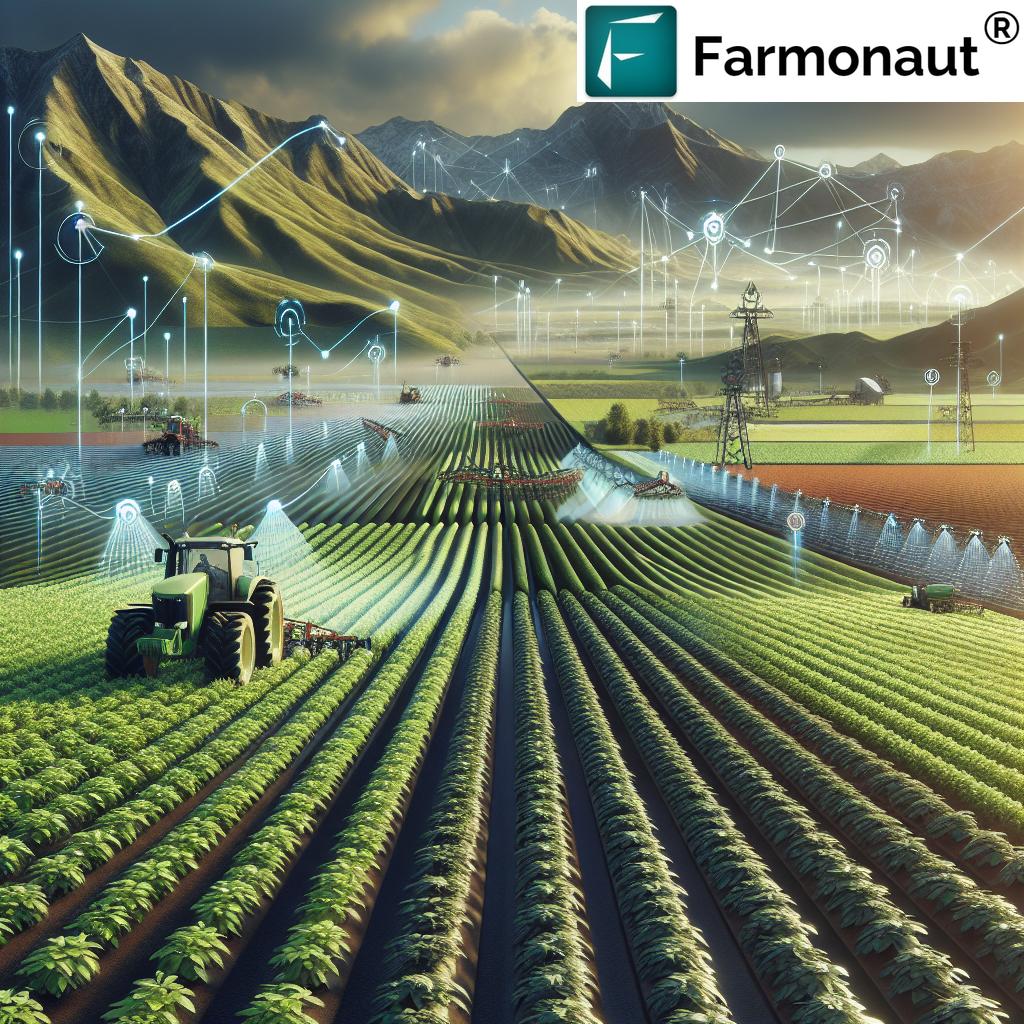Real-Time Monitoring Empowers Farmers’ Crop Growth
Modern agriculture is experiencing an extraordinary transformation. The convergence of real-time crop monitoring, AI in farming, and IoT sensors is equipping farmers with powerful digital agriculture tools to enhance productivity, ensure sustainability, and make smarter decisions. These innovations are not just improving crop yields — they’re revolutionizing how we address pest threats, manage resource consumption, and optimize every aspect of the crop growth cycle.
In this comprehensive guide, we explore the latest technologies enabling real-time monitoring, examine their profound impact on farmers’ yields and sustainable practices, and show how companies like Farmonaut are making precision agriculture technology accessible to farmers globally.
The Need for Real-Time Crop Monitoring in Modern Farming
Traditional farming methods—relying on periodic assessments and visual inspections—often fail to deliver timely warning about issues like pest infestations, nutrient deficiencies, or water stress. By the time these are noticed, significant damage to crops and wasted resources may have already occurred.
Real-time monitoring bridges this gap by delivering immediate insights into crop health and field conditions. Using digital agriculture tools such as IoT sensors, drones, and AI algorithms, farmers can now:
- Detect crop stress or pest infestations early
- Tailor irrigation, fertilization, and pest control interventions precisely
- Enhance productivity while minimizing waste
- Make data-driven decisions that promote sustainable practices
With field conditions changing rapidly due to climate variability, precision and speed are more critical than ever. The landscape of agriculture demands monitoring systems that are unbiased, reliable, and available in real-time.
Key Technologies Powering Real-Time Crop Monitoring
Let’s examine the cutting-edge technologies that together form the backbone of smart farming solutions:
1. IoT Sensors in Agriculture
IoT sensors are compact, durable monitoring devices placed across fields to capture continuous data about soil moisture, temperature, humidity, and nutrient levels. The highly localized information gathered by IoT sensors enables:
- Tailored irrigation (avoiding under/over-watering)
- Spot-on fertilization
- More precise pest control interventions
For example, sensors can instantly alert farmers when soil humidity dips below thresholds, helping optimize water usage and minimize wastage.
2. Drone Crop Surveillance and Satellite Monitoring
Unmanned drones equipped with multispectral, thermal, and RGB cameras capture aerial imagery of crop canopies. Satellites complement this with high-frequency image capture over broader regions. These imaging tools help:
- Identify signs of stress, uneven growth or pest damage invisible to the human eye
- Monitor fields remotely in large-scale or difficult terrain
- Enable continuous surveillance throughout critical crop growth phases
This fusion of drone and satellite remote sensing for crop health generates high-resolution data that empowers timely and accurate interventions.
3. AI in Farming & Machine Learning Analytics
Advanced artificial intelligence (AI) and machine learning algorithms process vast data streams from sensors, drones, and satellites. They:
- Predict pest outbreaks and crop diseases before visible symptoms appear
- Forecast yield outcomes
- Pinpoint potential stress or deficiencies at an early stage
- Recommend targeted interventions to optimize resource use and reduce waste
AI enables farmers to act with precision, maximizing both crop yields and resource savings.
4. Mobile Applications & Real-Time Alerts
Integrated mobile apps connect farmers directly with monitoring systems. Handy features include:
- Instant data access and field performance tracking on-the-go
- Automated alerts about pests, adverse weather, or nutrient stress conditions
- Guidance for sustainable practices via weather forecasts and crop management guides
With these apps, monitoring is no longer tied to the office. Farmers can remain connected to their fields anywhere, anytime.
5. Remote Sensing & Multimodal Imaging
Modern remote sensing goes beyond basic visual inspections. Using spectral, thermal, and even lidar imaging, these technologies provide multi-dimensional insights into plant health. Benefits include:
- Pinpointing water stress, nutrient deficiencies, or chemical imbalances with unrivaled accuracy
- Delivering early warnings of crop damage or suboptimal growth patterns
The result: early, informed interventions and reduced resource usage.
Farmonaut: Affordable Precision Agriculture for All
At Farmonaut, our mission is to make real-time crop health monitoring, AI-based advisory, and resource management tools widely available and affordable. We harness the full potential of:
- Satellite-based crop health monitoring — Utilizing multispectral satellite imagery for NDVI, soil moisture, and nutrient level insights.
- AI-driven Jeevn Advisory System — Personalized, actionable crop management and weather guidance derived from advanced machine learning analytics.
- Blockchain-enabled Traceability — Ensures food safety and product authenticity in supply chains, from farm to consumer.
- Fleet & Resource Management — Optimizes logistics, vehicle usage, and farm machinery scheduling to reduce operational costs.
- Carbon Footprint Tracking — Supports sustainability reporting and emission reduction for agribusinesses.
Our user-friendly Android, iOS, and Web Apps (see app links and button images below) give farmers of any size access to high-frequency, actionable crop monitoring data—without the need for on-field hardware investments.
For integration with your digital systems or for agritech developers, our powerful and scalable Farmonaut Satellite & Weather Data APIs (see Developer Documentation) deliver high-frequency satellite and weather-based farm monitoring capabilities.
Do you manage plantations at scale or offer advisory to multiple growers? Our large-scale farm management tools bring you centralized dashboard access to all monitoring, resource, and logistics data—saving you time and money.
Additionally, our satellite-based crop loan & insurance verification services empower institutions and farmers to streamline financing, reduce fraud, and boost access to agricultural insurance.
Comparative Impact Table: Transformative Effects of Crop Monitoring Technologies
How do leading real-time crop monitoring technologies stack up in yield improvements, pest detection, resource savings, and farm adoption? Explore our summary table below:
| Technology | Estimated Yield Increase (%) | Early Pest Detection (Days Faster) | Resource Savings (%) | Adoption Rate (% of Farms, est.) |
|---|---|---|---|---|
| Satellite-Based Crop Monitoring | 15–20% | 5–10 days | 20–30% | 30% |
| IoT Soil Sensors | 10–15% | 3–7 days | 25–35% | 18% |
| AI-Driven Analytics | 12–18% | 7–14 days | 30–40% | 12% |
| Drones for Crop Surveillance | 12–15% | 7–10 days | 15–25% | 7% |
| Mobile Applications & Apps | 10–13% | 5–8 days | 10–15% | 22% |
Source: Industry averages and academic research; values may differ by region and crop type. Table illustrates the clear benefits and broadening adoption of real-time crop monitoring and precision farming technology tools.
Benefits of Real-Time Crop Monitoring for Farmers & Crop Growth
Adopting real-time crop monitoring, AI-driven analytics, and IoT sensors in agriculture delivers a spectrum of measurable advantages—enhancing crop yields, reducing costs, and driving the shift toward sustainable agriculture.
- Improved Decision-Making: Immediate, accurate data allows for timely, informed decisions—tailoring interventions to actual crop needs. This enhances performance and minimizes reactive, resource-wasting measures.
- Increased Crop Yields: Early detection of pest infestations, nutrient deficiencies, and water stress enables farmers to maximize yield outcomes and overall crop growth potential.
- Cost Efficiency: Smart monitoring helps avoid unnecessary application of fertilizers and chemicals, conserves water, and reduces operational expenses.
- Enhanced Pest & Disease Management: Digital agriculture tools identify threats before they spread, empowering early pest detection and rapid, localized interventions, minimizing damage.
- Resource Optimization & Sustainability: Focused monitoring conserves precious resources and promotes eco-friendly practices, underpinning a more sustainable agricultural landscape.
Challenges & Considerations in Transitioning to Digital Agriculture
Despite its game-changing promise, real-time monitoring comes with challenges that must be addressed for successful, inclusive adoption:
- High Initial Costs: Advanced AI-driven sensors, drones, and satellite processing can be expensive, especially for small-scale farmers. Affordable, scalable solutions like Farmonaut’s satellite-based model are vital to reducing these costs.
- Lack of Digital Literacy: Not all farmers are experienced with digital apps or analytical tools, underlining the importance of training and easy-to-use applications.
- Connectivity Issues: Rural regions often lack stable internet, which is key for cloud-based real-time data transmission. Expanding rural connectivity and leveraging satellite internet can help bridge this gap.
- Data Security & Privacy: As data becomes central in farming, robust protocols must be put in place to protect farmers’ and organizations’ sensitive information.
Overcoming these challenges requires thoughtful policy, continuous technological advancements, and the support of solution providers dedicated to accessibility and inclusivity.
Future Outlook: The Connected, Data-Driven Future of Crop Monitoring
The future of real-time crop monitoring and digital agriculture is incredibly bright. With accelerating advancements in IoT sensors, drones, AI, and mobile solutions, we are on the cusp of creating fully connected farm ecosystems where every variable is measured, analyzed, and optimized—instantly.
- Advanced AI Integration: Artificial intelligence will deliver even more accurate forecasting of yield potentials, weather impacts, and pest outbreaks.
- Sensors Everywhere: Next-gen IoT sensors will capture real-time data in every corner of the field, granting unprecedented insight into soil conditions and plant health.
- Unified Mobile-First Platforms: Intuitive apps will connect farmers, advisors, and supply chains into a seamless, digitally connected ecosystem.
- Holistic Resource Optimization: Monitoring technologies will precisely track and manage nutrients, water, and even carbon emissions for improved sustainability.
These integrated innovations promise even higher yields, greater efficiency, and more sustainable approaches—empowering farmers and supporting global food security.
Get Started: Farmonaut Subscription Plans for Real-Time Crop Monitoring
Farmonaut believes precision agriculture technology should be accessible to farms of any size. Explore affordable, scalable subscription plans and try our real-time crop monitoring solutions today.
FAQ: Real-Time Crop Monitoring & Digital Agriculture
1. What is real-time crop monitoring and why is it important?
Real-time crop monitoring is the continuous tracking of soil, crop, and environment conditions using sensors, satellites, AI, and apps. Timely data helps farmers detect issues—like pests, water stress, and nutrient deficiencies—early, enabling quick interventions to optimize yield and minimize waste.
2. How do IoT sensors in agriculture improve productivity?
IoT sensors capture real-time data on soil moisture, temperature, and other vital conditions. This allows precise decision-making for irrigation, fertilization, and pest control, resulting in higher productivity and resource savings.
3. What are the advantages of drone crop surveillance?
Drones with multispectral and thermal cameras quickly capture aerial imagery of large fields. They help farmers identify stress, pests, and damage earlier and more accurately than traditional scouting.
4. Is real-time monitoring affordable for small-scale farmers?
With platforms such as Farmonaut using satellite-based monitoring and mobile apps, precision agriculture technology is now affordable and scalable for farmers worldwide.
5. How does AI in farming help with early pest detection?
AI-driven algorithms analyze satellite and sensor data to recognize early signs of pest infestations—often before visible symptoms appear. Farmers get quick alerts to take action and reduce crop damage.
6. What role does remote sensing play in sustainable agriculture?
Remote sensing for crop health identifies soil, water, and nutrient stress precisely, supporting strategic resource optimization and sustainable practices.
7. Can Farmonaut help corporate clients with traceability and sustainability?
Yes. Farmonaut’s blockchain-based product traceability solution (explore here) ensures transparency from field to market. Its carbon footprint tracking aids sustainability reporting in agriculture and food supply chains.
8. Where can I download Farmonaut apps or access the API?
Download our Android, iOS, or Web app above, or integrate our API using detailed developer docs.
9. How does real-time monitoring support sustainable farming practices?
By minimizing waste, optimizing inputs, reducing unnecessary chemical applications, and supporting carbon footprint management, real-time monitoring is central to a greener, more sustainable agriculture future.
Conclusion: Empowering Farmers, Maximizing Growth
The transition to real-time crop monitoring marks a pivotal moment in the landscape of global agriculture. By harnessing IoT sensors, drones, AI-powered analytics, and digital agriculture tools, farmers are empowered to increase crop yields, boost resource efficiency, and promote truly sustainable practices.
At Farmonaut, we are proud to support this revolution—bringing cutting-edge technology and actionable data to every corner of the field, for farms large and small. The promise of real-time monitoring is no longer a future vision—it’s here, now, and transforming how the world grows its food.


